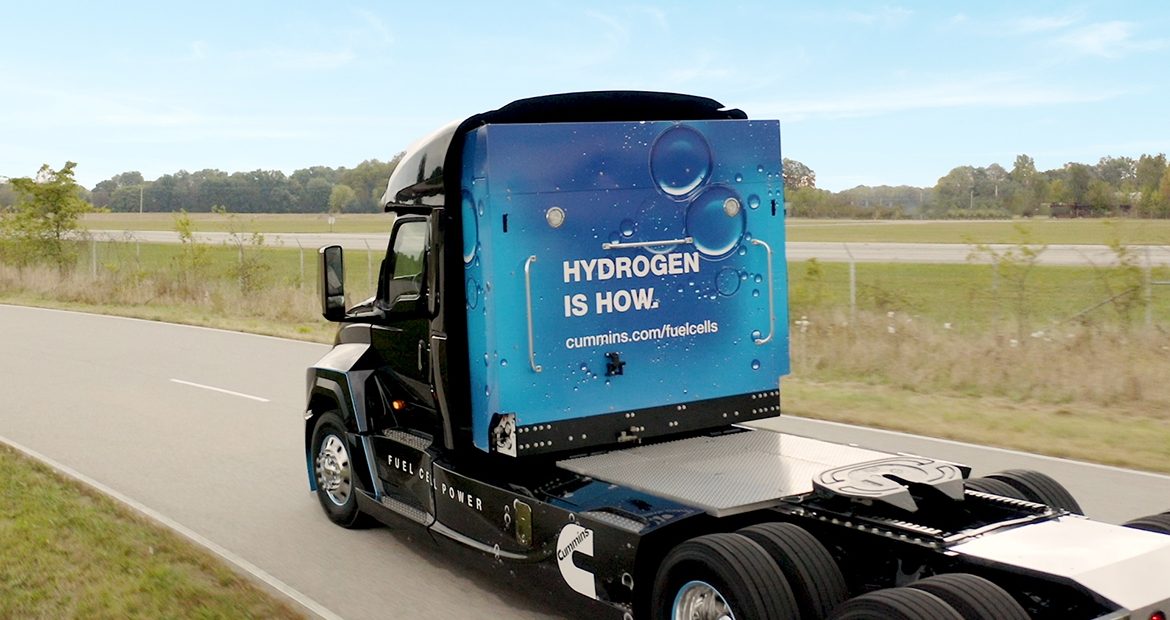Cummins showcases hydrogen fuel cell truck during 2019 North American Commercial Vehicle Show

This week Cummins Inc. unveiled its latest innovation, a heavy-duty truck with fuel cell and battery electric power. The demonstration vehicle was unveiled at the 2019 North America Commercial Vehicle Show in Atlanta.
“Developing this cutting-edge hydrogen fuel cell truck as a technology demonstrator is an important step in gaining valuable insights that are critical to continue developing the right solutions for the market and preparing for the next 100 years. Some companies make headlines talking about the future, but we‘re busy building for the future,” said Thad Ewald, vice president, corporate strategy at Cummins and leader of the company‘s Electrified Power business.
“In the long-run, the customers we serve will likely need more than one type of power, depending on their specific markets, applications and use cases. We are uniquely positioned to help our customers select the right solution for their needs. Our deep technological expertise and global service and support network means we are able to help them transition from one technology to another at the time that‘s best for their business.”
The zero-emissions class 8 6×4 day cab tractor is a technology demonstrator suitable for vocational applications, including regional haul, urban delivery operations, port drayage and terminal container handling.
The truck was designed and integrated by Cummins in Columbus, Indiana and includes a proton exchange membrane (PEM) fuel cell from Hydrogenics, a recent addition to Cummins. The truck was designed for a 90-kW fuel cell and is scalable in 30kW or 45kW increments up to 180kW, and also has a 100-kWh lithium-ion battery capacity. The truck has a range of 150 to 250 miles (240 to 400km) between filling up, however, that range can be extended with additional hydrogen tanks, by increasing the tank storage pressure or installing additional fuel cells to optimise management of the vehicle load factor.




